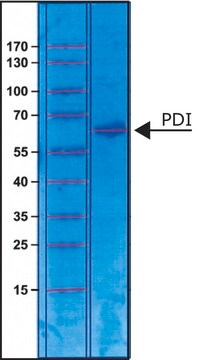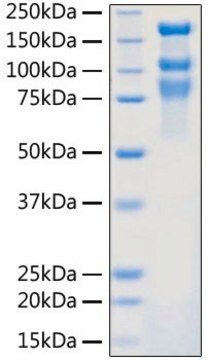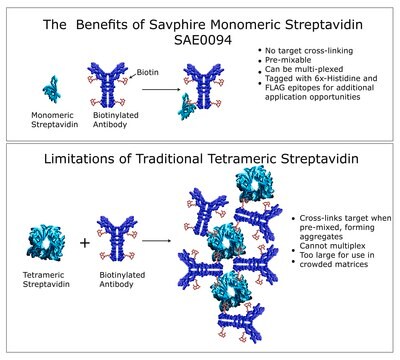P7372
Anti-Protein Disulfide Isomerase (MD-12) antibody produced in rabbit

affinity isolated antibody, buffered aqueous solution
Sinónimos:
Anti-Erp58, Anti-PDI
About This Item
Productos recomendados
biological source
rabbit
Quality Level
conjugate
unconjugated
antibody form
affinity isolated antibody
antibody product type
primary antibodies
clone
polyclonal
form
buffered aqueous solution
mol wt
antigen 57 kDa
species reactivity
human, bovine, rat, mouse
enhanced validation
independent
Learn more about Antibody Enhanced Validation
technique(s)
immunoprecipitation (IP): 2-5 μg using RIPA lysate (500 μg) of rat NRK cells
indirect immunofluorescence: 2-5 μg/mL using human HeLa cells
western blot (chemiluminescent): 0.1-0.2 μg/mL using whole extract of mouse NIH3T3 cells
UniProt accession no.
shipped in
dry ice
storage temp.
−20°C
target post-translational modification
unmodified
Gene Information
human ... P4HB(5034)
mouse ... P4hb(18453)
rat ... P4hb(25506)
General description
Immunogen
Application
- immunoblotting
- immunoprecipitation
- immunofluorescence
Biochem/physiol Actions
Physical form
Disclaimer
¿No encuentra el producto adecuado?
Pruebe nuestro Herramienta de selección de productos.
Storage Class
10 - Combustible liquids
wgk_germany
nwg
flash_point_f
Not applicable
flash_point_c
Not applicable
Elija entre una de las versiones más recientes:
¿Ya tiene este producto?
Encuentre la documentación para los productos que ha comprado recientemente en la Biblioteca de documentos.
Nuestro equipo de científicos tiene experiencia en todas las áreas de investigación: Ciencias de la vida, Ciencia de los materiales, Síntesis química, Cromatografía, Analítica y muchas otras.
Póngase en contacto con el Servicio técnico








